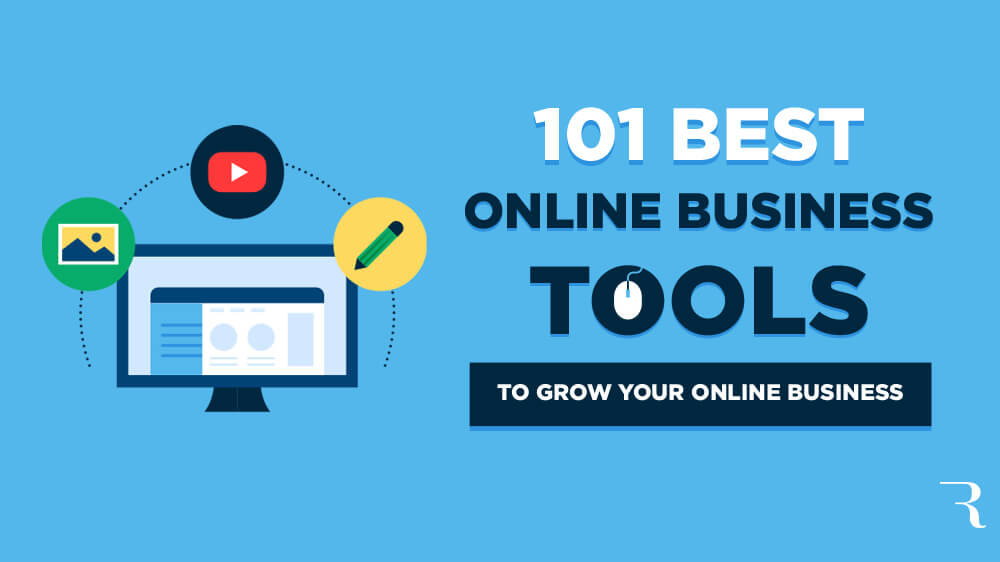The digital asset management (DAM) landscape is currently undergoing a transformative evolution. For years, DAM platforms simply served as a system or record for an organization’s digital content, but the expectations and aspirations for today’s DAM systems are much higher. In 2025, DAM is emerging as a strategic tool in an organization’s tech stack, enabling businesses to scale operations, integrate seamlessly into enterprise ecosystems, and harness the potential of AI-driven innovation.
This blog draws insights from a recent industry panel that explored three pivotal trends redefining DAM solutions in 2025: hyper-connectivity, adaptability, and autonomy. We will also share some actionable strategies to navigate these trends and position your organization for competitive success.
State of the Market: Challenges and Opportunities
Organizations increasingly recognize that traditional DAM solutions are failing to meet the demands of modern enterprises. Polls reveal that businesses using outdated systems face adoption challenges, with many relying on seven or more disparate content libraries and reporting only 18% user adoption.
What’s driving the shift? Three key factors:
- Flexibility to adapt to diverse team needs, integrations, and workflows.
- Searchability to tackle inefficiencies caused by scattered content silos and applications.
- Scalability to handle the exponential growth of assets, including petabytes of video data and AI-generated content.
Businesses must prioritize adaptability, governance, and strategic alignment within their DAM platforms to avoid these obstacles and ensure enterprise-wide adoption.
Key Trends for 2025
Here’s the expanded section that incorporates DAM as a strategic hub within the enterprise tech stack:
- DAM as the Hub of the Enterprise
Digital Asset Management (DAM) systems are no longer just tools for organizing and storing assets. They are evolving into central content platforms for the enterprise, driving collaboration, reducing redundancy, and enhancing the value of content across the organization. This transition reflects the growing demand for hyper-connectivity and strategic alignment between content and broader enterprise goals.
Hyper-Connectivity: A Unified Tech Stack
Organizations need to strive to implement DAM solutions that integrate seamlessly with other key tools in the enterprise technology stack:
- API-Driven Connectivity: With robust APIs and intelligent connectors, DAM systems bridge the gap between silos, creating unified workflows that eliminate the need for manual asset transfers.
- Embedded Functionality: Users can access, retrieve, and manage assets directly from platforms like Salesforce, Adobe Creative Suite, and Microsoft Teams without logging into the DAM platform, reducing friction and enhancing efficiency.
- End-to-End Collaboration: From marketing campaigns to compliance reviews, DAM systems synchronize asset management with project management tools, customer relationship platforms, and even supply chain software, ensuring every team operates from a single source of truth.
Specialized Portals for Tailored Access
Modern DAMs offer customizable and role-specific portals, providing unique interfaces and workflows for different users and departments:
- Tailored Dashboards: Marketing teams can leverage portals with AI-driven recommendations for campaign assets, while researchers or compliance officers see interfaces optimized for search and audit needs.
- Metadata Customization: Each portal can prioritize specific metadata fields, ensuring users interact with the most relevant information for their roles.
- Controlled Permissions: Role-based access controls ensure teams only see the assets they need, protecting sensitive information and simplifying the user experience.
Consolidation: Reducing Costs and Complexity
By expanding functionality and integrating with other systems, DAMs can replace multiple tools in the enterprise tech stack, leading to significant cost savings and operational improvements:
- Subscription Cost Reduction: Consolidating project management, rights management, and even light editing or publishing tools into a DAM reduces the required software licenses.
- Simplified Oversight: With fewer tools to manage, IT teams and administrators can reduce the time spent training new users, performing updates, and troubleshooting overcomplicated processes.
- Streamlined Workflows: Instead of navigating between disconnected systems, teams can manage their entire content lifecycle—from creation to distribution—within the DAM, reducing complexity and increasing efficiency.
Content as a Strategic Asset
When a DAM serves as the hub of your ecosystem, it transforms content from a static resource into a strategic asset:
- AI-Driven Insights: Unified content libraries provide a rich dataset for training AI, enabling more accurate search results and enhancing the effectiveness of generative AI tools.
- Brand Consistency and Compliance: A single source of truth ensures that all teams use approved, up-to-date assets, maintaining brand integrity and reducing compliance risks.
- Cross-functional value: For example, a healthcare organization recently consolidated clinical video archives, marketing materials, and HR content within a single DAM. This streamlined asset access across departments enhanced operational efficiency and empowered cross-functional collaboration.
The Strategic Role of DAM in the Enterprise
As DAM systems evolve, they increasingly play a strategic role in the enterprise by:
- Accelerating Go-to-Market Efforts: Integrated workflows and AI recommendations speed up asset discovery, approvals, and distribution, cutting time-to-market for campaigns and products.
- Supporting Innovation: Consolidated data and content enable organizations to leverage new technologies, such as augmented reality, generative AI, and personalized marketing, at scale.
- Enhancing Sustainability: Centralized storage and optimized workflows reduce resource consumption, aligning with environmental goals.
DAM systems serve an increasingly important role in the enterprise content ecosystem. They streamline operations and create opportunities for innovation, cost savings, and strategic growth.
2. The Adaptive DAM
In the evolving landscape of content creation, adaptability is no longer optional—it’s essential. The Adaptive Digital Asset Management (DAM) solution doesn’t just store assets; it evolves with your team, processes, and business needs.
The DAM that Adapts to You
Traditional DAM systems often force users into rigid workflows, creating inefficiencies and friction. Adaptive DAM solutions break this mold, offering unparalleled flexibility designed to work seamlessly with diverse teams and rapidly shifting objectives.
Customized Experiences
Adaptive DAMs empower organizations to tailor their digital ecosystems:
- Personalized Workflows: Teams can create bespoke processes for tasks like metadata management, asset approvals, and creative collaboration.
- Dynamic Interfaces: Whether managing AR/VR-ready assets, 3D product designs, or a media library spanning decades, users experience a platform uniquely configured to their roles and objectives.
Future-Proofing for Scalability
Evolving market demands require systems that can grow alongside them:
- Seamless Integration: Quickly adopt tools like generative AI, supply chain platforms, or advanced analytics without disruption.
- Enterprise Scale: Adaptive DAMs meet the most demanding global requirements, supporting millions of assets and billions of API calls.
Real-World Impact
Adaptive DAM solutions deliver tangible results across industries:
- Accelerating Innovation: In the apparel industry, DAM enabled 3D digital product creation, replacing physical prototypes and driving sustainability by reducing waste.
- Driving Efficiency: Global organizations have leveraged adaptive DAMs to centralize operations, improving time-to-market while ensuring consistency across channels.
By shifting the paradigm from rigid systems to truly adaptive solutions, Adaptive DAMs ensure teams have the tools to work smarter, faster, and more collaboratively—today and tomorrow.
3. The Autonomous DAM
The evolution of Digital Asset Management (DAM) has progressed to intelligent systems capable of leveraging AI for tagging and search. AI can make things faster, but it doesn’t make things simpler. It doesn’t fix the fragmentation or help teams work how they want to. It often makes things more complicated and then hurts the system’s adoption in the first place. The promise of AI is real—but only if you rethink the system around it.
To truly solve these challenges, technology needs to do two things: it needs to be adaptive, and it needs to be autonomous. This next-generation approach reimagines the DAM not as a replacement for DAM managers but as a powerful assistant that handles repetitive yet essential tasks. This assistance lets managers focus on high-impact, strategic initiatives that drive business growth.
What Defines an Autonomous DAM?
An autonomous DAM doesn’t simply respond to user input—it anticipates needs, learns from interactions, and self-manages to meet the dynamic demands of modern enterprises. Operating as a collaborative assistant helps eliminate operational friction and enhance team productivity.
Enhanced User Interaction
Autonomous DAMs will be designed to learn from user behavior and adapt accordingly:
- Persona DNA Mapping: The DAM of the future doesn’t just adapt—it learns. It builds a rich profile to deeply understand the unique DNA of each user. By understanding the users DNA the DAM will not only adapt to their needs, but deliver highly personalized recommendations becoming an intuitive partnerCompliance on Autopilot: With built-in self-auditing mechanisms, an autonomous DAM ensures that assets adhere to brand guidelines and regulatory requirements. This self-auditing reduces risk and removes the manual effort typically associated with compliance checks.
Effortless Workflow Management
Autonomous DAMs will revolutionize the way workflows are managed:
- Dynamic Workflow Optimization: These systems continuously refine and create workflows based on user inputs, historical data, and organizational priorities. Tasks like tagging, approval routing, and version management are streamlined automatically.
- Mundane Task Automation: From auto-tagging and metadata enrichment to organizing file structures, autonomous DAMs handle the details, freeing up DAM managers and creative teams to focus on innovation and strategy.
Scalable Intelligence
In the face of fluctuating business demands, autonomous DAMs excel at scalability and sustainability:
- Auto-Scaling Infrastructure: Storage and processing capabilities expand or contract seamlessly, ensuring enterprises can handle small-scale campaigns to massive global initiatives without manual intervention.
- Efficiency-Driven Intelligence: These systems optimize storage tiers by analyzing usage patterns and resource allocation, reducing costs and environmental impact.
A Strategic Assistant, Not a Replacement
The autonomous DAM does not replace human oversight but amplifies it. Tackling tedious yet necessary tasks allows DAM managers to:
- Devise strategies for better asset utilization.
- Collaborate across teams to align DAM workflows with broader organizational goals.
- Focus on initiatives that drive creativity, brand consistency, and efficiency at scale.
Real-World Impact of Autonomous DAMs
- Creative Team Enablement: By managing repetitive tasks like tagging and metadata updates, creative teams can spend more time ideating and producing high-value content.
- Streamlined Compliance: Organizations using autonomous DAMs report reduced compliance-related errors as the system enforces standards automatically.
- Enhanced ROI: With automated workflows and scalable intelligence, enterprises achieve faster time-to-market, optimized resource use, and improved collaboration.
The Autonomous DAM isn’t just a tool—it’s a forward-thinking approach that evolves alongside organizations, empowering teams to work smarter, faster, and with greater strategic focus.
Today, we’re rethinking how teams connect to the tools and data that matter most. With next-generation connectivity, we’re not just adapting to users—we’re empowering them. Take Marketing, for example. When working in Salesforce Marketing Cloud and creating an email campaign, modern connectivity doesn’t just integrate the systems—it transforms information and content. It passes campaign KPIs and audience segments directly to the DAM. The DAM intelligently recommends content aligned with campaign goals, effortlessly enhancing creativity and performance.
This isn’t just about functionality—it’s about creating experiences that feel intuitive, seamless, and inspiring.
Actionable Strategies for 2025
To harness these trends, consider the following:
- Develop a DAM Vision and Strategy:
-
- Identify future use cases and align your DAM roadmap with organizational goals.
- Collaborate with technology partners to ensure alignment and scalability.
-
- Prioritize Flexibility and Governance:
-
- Ensure your DAM can adapt to new requirements without disrupting existing workflows.
- Establish robust governance structures to maintain asset authenticity and streamline operations.
-
- 100% Adoption
-
- Understand the needs of your teams and rethink how teams connect to the tools and data that matter most.
- What barriers can you remove so creatives create, marketers inspire, product teams deliver, and compliance just happens.
- 100% adoption isn’t a goal; it’s the natural outcome of a system so intuitive, so connected, that it feels like it was made for you.
-
Looking Ahead: The Future of DAM
As DAM solutions evolve, their ability to adapt, integrate, and innovate will determine their role in driving enterprise success. By embracing the abovementioned trends, organizations can position their DAM systems as strategic enablers of growth, creativity, and efficiency in 2025 and beyond. Schedule a call today to discover how Orange Logic can transform your DAM into a strategic powerhouse.
Publisher: Source link











